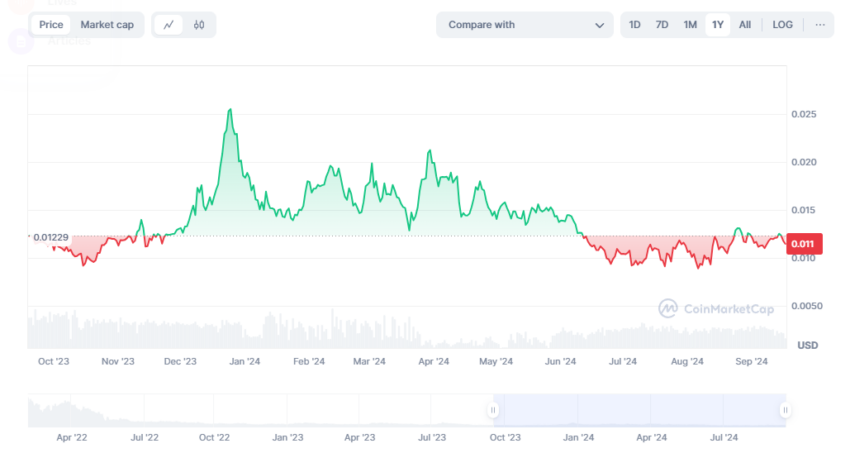An Initial Stake Pool Offering (ISPO) is a relatively new fundraising model first introduced on the Cardano blockchain. It promises certain advantages over other fundraising models, such as ICOs and IDOs. In this guide, we will cover everything about ISPOs, including how they work, their pros and cons compared to other crypto funding models, and more.
KEY TAKEAWAYS
• ISPOs allow users to stake coins in exchange for project tokens without spending their funds.
• Unlike ICOs and IDOs, ISPOs don’t require direct payments, which reduces risk for investors.
• Initially introduced on Cardano, ISPOs are now being adopted by other proof-of-stake blockchains.
What is an ISPO?
ISPOs are an effective way to fund a new crypto project while also keeping the underlying proof-of-stake (PoS) consensus of the blockchain decentralized and running. To understand how it works, we need to first explain the PoS consensus mechanism of the blockchain on which the ISPO is offered.
A PoS blockchain doesn’t rely on the brute computational force of the network, but on network validators. These validators verify network transactions and generate new blocks, thus securing the network.
Validators, which are nodes on the PoS blockchain, are chosen as slot leaders to generate the next block based on the consensus algorithm.
When a new block is generated, the protocol rewards the validator. The reward is generally distributed proportionally among the stakers based on their contributions to the network.
ISPOs primarily take place on Cardano, which operates using the Ouroboros protocol. Delegators stake ADA, the native coin on Cardano, in their chosen stake pool.
The more ADA staked in a pool, the greater its chances of becoming a validator and contributing to the network’s consensus. The selected validator earns a reward in ADA, which is then distributed among the delegators based on their stake.
How to participate in an ISPO?
When crypto holders stake their ADA in an ISPO, they don’t receive ADA rewards. Instead, they receive tokens from the new projects they are funding, while the project claims the ADA for its funding needs. This way, investors keep their original funds intact and earn tokens from the project.
In an ISPO, the pool operator typically sets a variable margin of 100%. Under the Ouroboros protocol, all rewards go to the pool operator, which is usually the project’s development team.
If the variable margin is less than 100%, the protocol distributes the rewards to the delegators. In this case, ADA stakers receive ADA as a reward.
To participate, investors must first own the native token of the PoS network of the ISPO.
Examples of ISPOs
Some of the most notable PoS blockchains that have ISPO are:
- Cardano: MELD, Minswap, SundaeSwap, MIRQUR, Ray Network, AADA, Mala DEX
- Terra: Mirror Protocol, Anchor Protocol
- Solana: Sunny Aggregator and Saber
- Polkadot: Polkadot and Kusama
- Tron: Tron (TRX) holders receive token airdrops.
MELD ISPO: Example of a successful fundraising
The MELD ISPO stands out as a good example of a successful fundraising campaign on the Cardano blockchain.
MELD, a decentralized liquidity protocol, enables users to borrow fiat currencies (USD or EUR) while using their cryptocurrency as collateral. It was one of the first decentralized platform offering fiat loans in the crypto space.
MELD launched its ISPO, allowing Cardano (ADA) holders to delegate their ADA to specific MELD stake pools through compatible wallets like Yoroi or Daedalus.
In return, participants received MELD tokens instead of ADA rewards, based on the amount of ADA staked and the duration of participation. This method enabled investors to support the project without directly risking their funds.

The ISPO attracted significant attention, with nearly 620 million ADA staked by the community. This achievement marked a major milestone. MELD ultimately met all of its fundraising goals.
The MELD ISPO ran successfully until October 27, 2021.
The success of the MELD ISPO demonstrates how the ISPO model can effectively raise funds while maintaining decentralized network security. It set a precedent for other projects looking to use the Cardano blockchain’s staking mechanism to engage investors and build community trust.
Crypto funding models explained
As of September 2024, the main crypto funding models are:
- ICO or Initial Coin Offering
- IDO or Initial DEX Offering
- IEO or Initial Exchange Offering
- STO or Security Token Offering
- ISPO or Initial Stake Pool Offering
Let’s have a quick look at each of these models.
What is an ICO?
ICOs allow new projects to attract potential investors, often by presenting a whitepaper or other project details. They became popular in 2017, reaching a new milestone when the industry compared ICOs to Venture Capital funding in 2018.
In ICOs, investors typically review the project’s details and, if convinced, invest according to the guidelines set by the project team. In return, they receive tokens with the hope that their value will rise as the project grows.
Many projects sell their tokens in exchange for established cryptocurrencies like Bitcoin or Ethereum. However, the crypto community has witnessed numerous projects that failed to deliver on their promises, leading to increased skepticism around ICOs.

What is an IDO?
IDOs (Initial DEX Offerings) are token offerings conducted through decentralized exchanges. They can serve a wide range of projects such as fan tokens for football teams or other sports. Additionally IDOs also allow communities to engage directly with projects.
Like ICOs, IDOs enable individual investors to fund projects. However, investors in IDOs do not gain equity in the project but can use their tokens to participate in certain aspects of the project.
A key advantage of IDOs is the immediate liquidity and trading they offer. Unlike ICOs, IDOs provide immediate liquidity and trading.
Most IDOs are offered on Binance DEX, Polkastarter, and Uniswap.
What is an IEO?
An IEO is fairly similar to an ICO, with the main difference being that the coins/tokens are offered on an exchange and not the project’s website. The former needs to have an account on the respective exchange to be able to participate.
Although the rules and terms of ICOs and IEOs may vary, both typically offer a fixed number of pre-mined tokens. Early investors can buy these tokens, with the funds raised being used to support the project’s development.
What is an STO?
An STO is a tokenized version of an Initial Public Offering (IPO). It involves selling security tokens — tokenized digital securities — on security token exchanges.
These security tokens represent an investment contract into an underlying asset (stocks, bonds, funds, real estate, and other investment assets). Security tokens represent ownership over securities that have a monetary value as it is backed by real-world assets.
Like traditional stocks, security tokens offer ownership of the security, and the information is stored on the blockchain. STOs are a cross between crypto ICOs and traditional IPOs, as they borrow systems for both investment methods.
Are ISPOs the future for crypto funding?
Initial Stake Pool Offerings (ISPOs) offer significant potential for PoS blockchain ecosystems by benefiting all parties involved. After the ICO boom of 2017–2018, which left many investors wary due to unfulfilled promises, the ISPO model presents a more reliable alternative that could regain their trust.
As more crypto projects adopt ISPOs for fundraising, investors can support projects they believe in without risking their original funds. And that precisely makes it a more appealing option compared to some of the other crypto fundraising models.
Frequently asked questions
Is an ISPO different from an ICO?
How do I join the MELD ISPO?
What is an ISPO in crypto terms?
What is MELD crypto?
Disclaimer
In line with the Trust Project guidelines, the educational content on this website is offered in good faith and for general information purposes only. BeInCrypto prioritizes providing high-quality information, taking the time to research and create informative content for readers. While partners may reward the company with commissions for placements in articles, these commissions do not influence the unbiased, honest, and helpful content creation process. Any action taken by the reader based on this information is strictly at their own risk. Please note that our Terms and Conditions, Privacy Policy, and Disclaimers have been updated.





